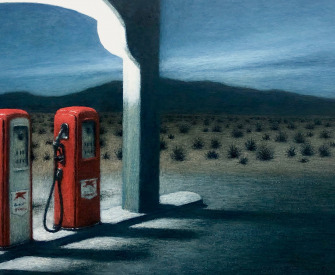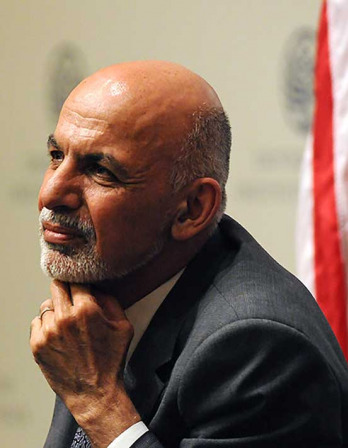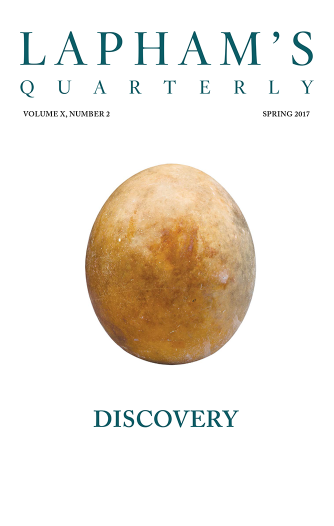The sea is mother-death, and she is a mighty female, the one who wins, the one who sucks us all up.
—Anne Sexton, 1971
War Refugees, by Irving Norman. Smithsonian American Art Museum, Museum purchase.
The 1995 film Waterworld, which featured a landless earth where Kevin Costner quenches his thirst with his own purified urine and treasures a few grains of dirt like the promising nuggets of a gold rush miner, appears less and less a bad movie by the year. At the height of America’s self-satisfaction with its world-historical standing, it is remarkable that the most extravagant Hollywood production of the period believed its audience was prepared to reckon with such a bitter irony: we began as climate refugees; we will almost certainly end as climate refugees. There are still many who can, at a distance, serenely watch forests burn, shores rise, and dry earth crack, whether online or in their rearview mirrors. But the ranks of the environmentally privileged are contracting. One of the first signs that the effects of climate change are nearing those who do not yet feel its glow is the arrival of climate refugees. The Internal Displacement Monitoring Centre, an organization funded by the United States, the European Union, and several other governments, estimates that, over the past decade, an average of 24 million people annually were displaced by climate-related or extreme weather events. Future generations will find it difficult to fathom that our cult of economic growth was able to deny for so long that humans live on a fragile planet with finite resources.
The career of the word climate may contain some clues to the amnesia. The ancient Greek word klima denotes a specific geographic zone between two latitudes. Roughly coeval with the rise of Anthropocene—the term historians use to designate the period when human production started adversely affecting planetary conditions at an accelerating speed—climate became increasingly abstract in European languages. With the earth’s resources more satisfyingly under human control, climate became a metaphor. Romance language and English speakers came to speak of a climate of feeling or a climate of opinion or the economic climate. Like atmosphere, climate was a benign context that, whatever its own needs, could still be shaped and molded to suit human ones.
The climate is now the acknowledged protagonist again. It seems remiss to explain any major event without reference to it. The need to explain the fall of Rome, for instance, yielded two opposing literary monuments of late antiquity and the Enlightenment: Saint Augustine’s City of God and Edward Gibbon’s The History of the Decline and Fall of the Roman Empire. Neither of these accounted for the fall of Rome from the perspective of the planet Earth. The classicist Kyle Harper has recently argued how Rome fell, in part, because of its inability to repel or absorb “climate refugees on horseback.” For two decades in the mid-300s, the Huns of the Eurasian Steppe faced the most severe drought in more than two millennia. The westerly winds that brought rains to the interior of Asia shifted north, leaving the region cripplingly dry. As fully committed nomads of the steppe, who relied on grassland to feed their giant horse herds, the Hunnic tribes started expanding outward.
During this record-breaking drought, they experimented in the West rather than merely preying on the Chinese empires in the East. The result was that the Roman Empire soon faced ferocious bands of mounted nomads supremely skilled with bow and arrow. “They are not at all adapted to battles on foot,” complained the Roman historian Ammianus Marcellinus, “but they are almost glued to their horses, which are hardy, it is true, but ugly.” Because they were more purely nomadic, the Huns did not perceive the value of Roman infrastructure and leveled it without hesitation. Unlike prior barbarian invasions, and because the climate drove them on, their women and children rode behind their armies, producing the next generation of warriors behind the lines.
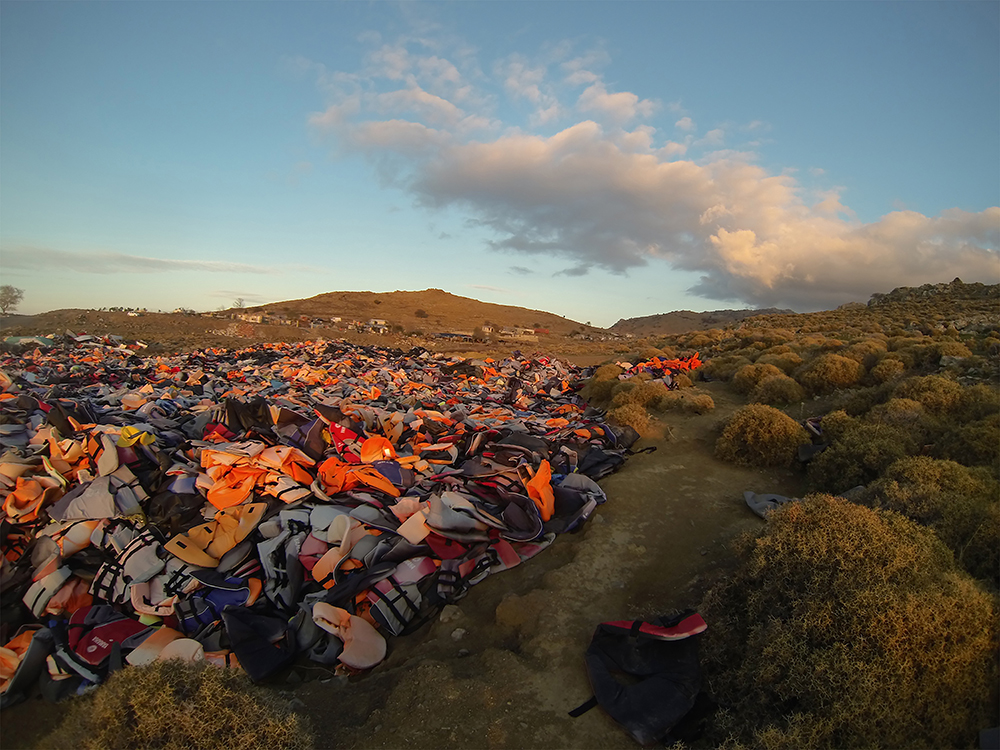
Division Line, by Pam Longobardi, 2016. Archival pigment print, 27 x 40 inches. Site photograph of the “life-jacket graveyard,” Lesbos, Greece. © Pam Longobardi, courtesy the artist and HATHAWAY | Contemporary Gallery, Atlanta.
Climate refugees were hardly a foreign phenomenon to the ancients. In his Histories, Herodotus tells how the ancient Greeks and the Egyptians each thought the other was poised to become climate victims. When Herodotus traveled to Egypt to conduct field interviews for his research, he wanted to know everything about it: how much water it contained, how much the sun evaporated that water, and what its seasonal rhythms were. That the Nile blithely irrigated vast portions of the delta without the need for the Egyptian farmers to do anything filled him with civilizational envy. But Herodotus predicted that the Egyptians would be in trouble when the delta collected too much sediment and reached an incline that made it no longer so easily irrigable. Then the Egyptians “will suffer for all remaining time,” he wrote. During an interview he conducted with a Nile River clerk, he discovered Egyptians felt the same way about him. They pitied the Greeks because they were more dependent on rainfall for their crops. “If the god shall not send them rain,” Herodotus wrote, channeling his native informant, “but shall allow drought to prevail for a long time, the Hellenes will be destroyed by hunger; for they have in fact no other supply of water to save them except from Zeus alone.” The losers of this game of environmental chance would start appearing as climate refugees at the winners’ doorstep, ready to worship new gods.
Ancient Greeks, Romans, Chinese, Hebrews, and Tamils recorded countless earthquakes and tsunamis that upset their civilizations and caused migrations. Yet these disasters belong to an epoch that was different from our own. The floods and tremors gave rise to elaborate mythologies that only gradually became interlaced with scientific reasoning, which often borrowed the same language and images.
Contemporary events, too, demand political and environmental scrutiny to explain them. The migration buildup at the U.S.-Mexico border has been fueled, at least in part, by the effects of climate change on Central American highlands, where rain and moisture has been shifted away from lowland fields and into higher altitudes where it can kill off crops in the form of undesirable frost. Iranian-U.S. tensions are also connected to, again only partially, the growing internally displaced population in Iran, where Lake Urmia, once the largest in the Middle East, has recently shrunk to a sliver of its original size. The cities affected have exerted great pressure on the government in Tehran to either appease these desperate constituencies or change the subject in the headlines. Even worse are the pistachio farms in southern Iran that are drying up by the thousands, destroying one of the country’s main exports.
Drought now features as well in the standard explanation for the civil war in Syria, where dried-up farmland encouraged young men from villages to gather in cities like Homs and Damascus, where they added tinder to the protests against Bashar al-Assad’s regime. The suppression of those protests sent around a million Syrians to Europe, where their arrival, and the meaning of their arrival, continues to wrack the continent’s politics. Even the forces of the European right, especially its younger generation, now claim the climate as their ward, with some of their commentators pointing out that not only blood but soil, too, should be their concern. They have tried to weave an anti-migration stance and the environment together, claiming, for instance, that refugees on the Balkan route trample Hungarian vegetation, becoming climate harmers in the process.
But it would be a mistake to think of today’s climate refugees as simply victims, propelled onward by invisible greenhouse gases or rising shorelines. Despite the horrors of Boko Haram in Nigeria, the conflicts between settled farmers and nomadic bands of Fula people have been responsible for more deaths. An ethnically defined group of Muslim trading people from Senegal, the Fula were the followers of a Muslim preacher named Usman dan Fodio, who in the early nineteenth century turned them into a sect and then made them subjects of the Sokoto Caliphate, the largest Muslim state south of the Sahara. He led his people on a quest to dip the Quran into the Atlantic Ocean in the west, and his followers spread throughout the northern Sahel, where many of them still live and where, in the Nigerian city of Kano, the fourteenth emir of Sokoto, Muhammad Sanusi II, a banker and former governor of the Central Bank of Nigeria, has his court. The Fula herdsmen of the Sahel, like the Huns before them, have run out of pasture for their animals. In search of it, they have been raiding fields and farms in the middle of Nigeria, on at least one occasion gunning down more than one hundred villagers with AK-47s. Pastoralists transformed into jihadists, they have unwittingly followed the footsteps of their nineteenth-century forebears. To become nomads bent on new territory in the twenty-first century is a recipe for violence.
The planet keeps to the astronomer’s timetable, but the wind still bloweth almost where it listeth.
—John Henry Poynting, 1899Not long before Usman was imploring his people to carry their faith across Africa, the Lakota Sioux found themselves being pushed from their farmlands and villages in the Great Lakes region in North America. As the Finnish historian Pekka Hämäläinen has shown, they responded to the French, British, and later American incursions by moving west, adopting horses and guns, and effectively becoming nomadic marauders who lived by controlling trade routes, massacring vast numbers of buffalo, and compounding their dominance by acquiring vaccines from Europeans that their fellow Indian tribes were unable to access. In their winter counts—graphics on buffalo hides that they kept to mark each year—the Lakota recorded that their transformation into nomads had been encouraged by the whispers of the trickster spirit Iktomi.
Little is know about the first great migrations of early humans out of the African continent, except for speculations that they were propelled by a dramatic drop in temperature. The environmental strain endured by early humans can be studied in their tooth enamel, which, like tree rings, indicate periods of starvation as well as provide clues about diet, such as whether those teeth cut through grain or whether the sustenance showed signs of a nomadic existence. Current evidence indicates that early humans first made their way out of the African savannas across present-day Djibouti, into the Middle East and the Indian coasts, where they lived at first on fruit, leaves, easily accessible shellfish, and slow-moving animals. In a world where every hill and rainstorm may have bristled with enchantment, it possibly would have been difficult for humans to leave sacred landscapes behind. It may have required the gods to whisper them forward into new lands to make necessity feel more sanctioned. It does not seem too much to think of climate migration as the mother, or at least the quickener, of the earliest religions.
People are currently leaving equatorial regions for more temperate northern climes, and to compound one climate irony with another, these temperate climes are often vast, vacant spaces. Alberta, Minnesota, Siberia—each of these places strenuously tries to attract members of their national populations, with little success. Only Soviet communism was able to populate Siberia, and marginally at that, while the great northern reaches of Canada and America required gold rushes and other capitalist flurries that often left nothing behind but ghost towns and displaced indigenous peoples. The application pool for these spaces likely will expand as the regions themselves become warmer.
One question is how orderly the crossing to safety will be. There are a number of scenarios to consider. The happy one is a transformation of human values. The current refugee regime is based on the right to asylum constructed in the ashes of the Second World War, when millions of displaced people needed to be housed in nation-states, which, despite the atrocities that had been committed in their name, were still viewed as the last fortifications capable of their protection. Yet while the right to asylum has remained the touchstone for refugees in the West, the content of the claims has radically shifted. When the French doctor and sociologist Didier Fassin recently investigated the history of refugee asylum claims in France over the past few decades, he discovered a shift away from ones based on political persecution of opposition groups in the 1970s toward those based on individual human rights persecution in the 1990s. In the wake of 9/11, it seems, refugees who could claim to be the victims of particular human rights violations (female genital mutilation, for instance) had a better chance of receiving asylum than political refugees, such as disaffected PKK fighters from Turkey or dissidents among the Tamil Tigers, who had previously been favored.
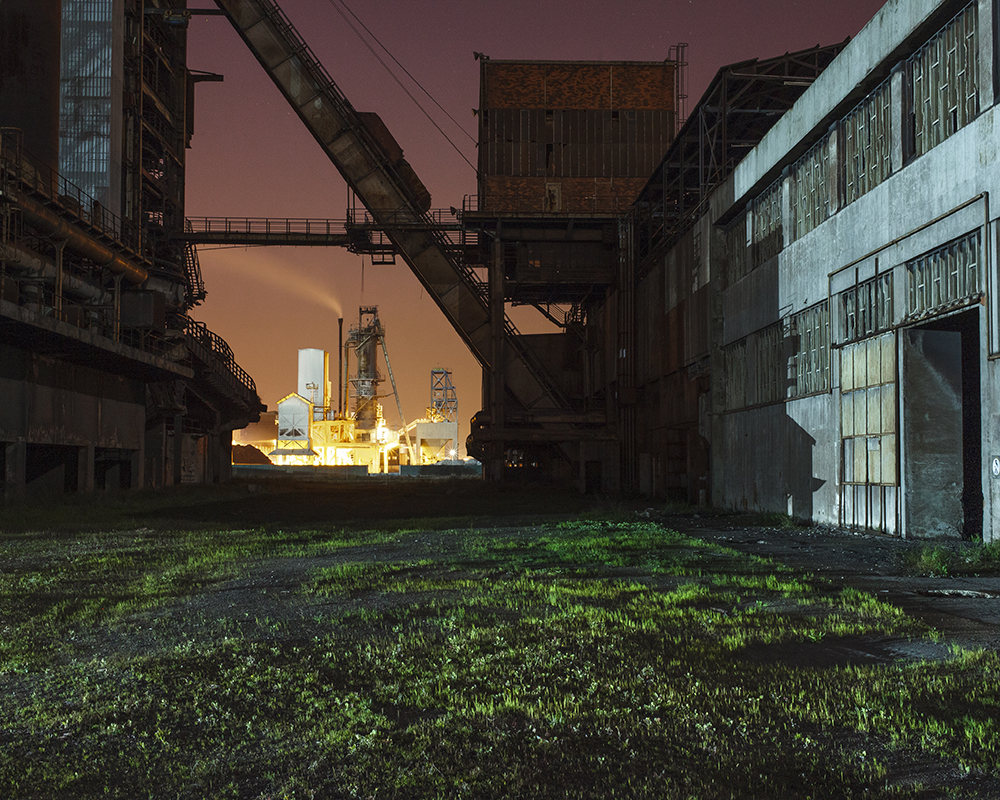
Siderurgia Nacional Blast Furnace #03, from the series Lost Empires, by Nuno Perestrelo, 2014. © Nuno Perestrelo, courtesy the artist and Galleri Duerr, Stockholm.
Can we expect climate to become a basis for refugee claims in the future? Green Party politicians across Europe are pushing this status on their governments when they are not already part of the governing coalition. “We need to rebuild the criteria for asylum,” said Claudia Roth, a Green Party member and vice president of the German Bundestag, at the party conference last year, “and climate change is now grounds for seeking refuge.” No Western government would willingly advertise itself as “guilty as charged” on environmental grounds and invite refugees on that basis. But the pressures are building. It can be tricky these days in certain European cities for the determinedly apathetic to run errands on Fridays when climate-striking schoolchildren taking part in Fridays for Future occupy the thoroughfares.
If the populations of the temperate zones do not oblige climate victims, there may be ways for those victims to take matters into their own hands. Ever since the decolonization of the early postwar decades, the countries of the equatorial zone have known that they hold some valuable cards, namely resources like lithium, oil, and uranium that the rest of the world require to make their cars, phones, and atomic bombs work. At least in theory, a sub-Saharan African government could exact penalties for the ravages of climate change perpetrated by the temperate zone by withholding these valuable resources. The idea has been floated before. When I traveled through the Sahelian portion of Niger last year, I kept finding at markets and bookstores copies of books by Seyni Kountché, including a popular purple edition of his quotations. He was the only political figure of the country’s past that any working person had a good word for. As president of Niger in the late 1970s and 1980s, Kountché had entertained the possibility of denying France the uranium it would need for its nuclear weapons. Like most attempts at depriving the West—including the oil embargo—Kountché used it more as a bargaining chip than as a way to carry out an act of vengeance. Yet poor countries under environmental siege will not lie down forever. Earlier this year Malaysia, which for decades has been a trash receiver from the temperate zone—in the form of actual trash arriving on ships—determined that Canada was a culprit in sending unwelcome plastics. It responded by sending tankers full of cheap plastic back to Canada.
An internationally coordinated response to climate change involving binding law is beyond our present political capacities. The rosiest future might be a world where regimes begin to compete to see which can produce the best environmental outcomes for their citizens: a kind of climate-protection arms race. The worst would be the opposite: resource wars and the weaponization of climate refugees. Instead of ancient Greeks and Egyptians pitying each other, the image is of new bands of the expelled, armed with nothing but their thirst, hunger, and burning skin, willing to die for water, food, and shade.

This story is part of Covering Climate Now, a global collaboration of more than 300 news outlets to strengthen coverage of the climate story.

